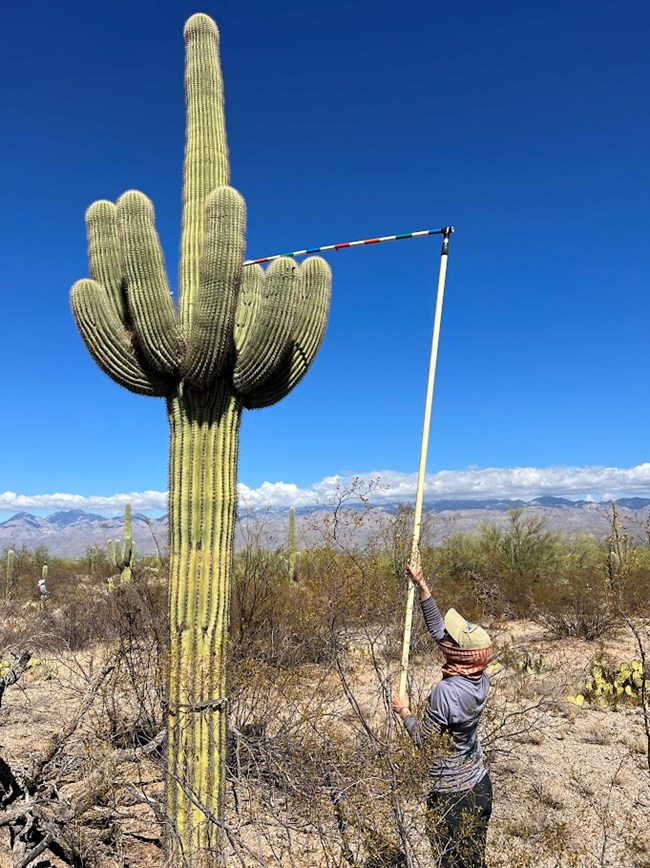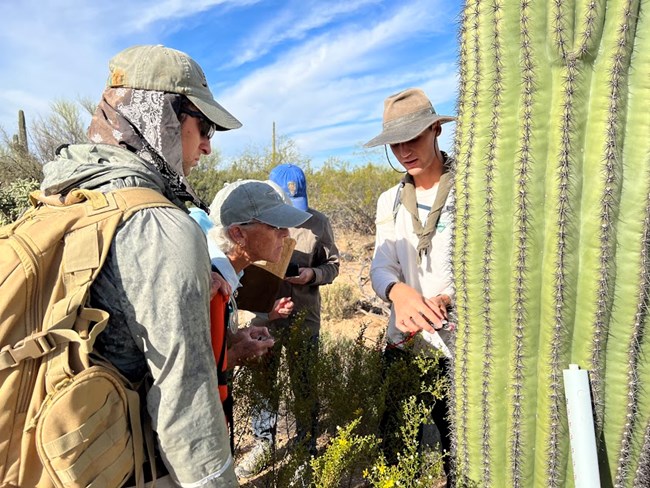Reaching for the SkySaguaros tower over the desert with their iconic stature and striking silhouettes. Their massive branches—called "arms"—can weigh several hundred pounds each. Every arm is capable of producing flowers and seeds, making them incredibly important for saguaro reproduction. The more arms a saguaro has, the better chance it has for a successful seed to take root and mature into a beautiful saguaro. However, despite their importance, very little is known about these arms. Citizen scientists are helping us study their growth and symmetry, and we invite you to join us in this research throughout the spring and winter of 2024! 
NPS photo What do we hope to learn?Many of the questions we hope to answer in this study come from visitors. Questions include: "Do saguaros grow their arms symmetrically?"Some of the longer and larger saguaro arms can weigh up to 250 lbs. each, and mature saguaro often have many arms. We’d like to know if saguaro grow their arms symmetrically in order to balance all that weight. "How tall does a saguaro have to be before growing its first arm?"Saguaros usually produce their first arms when they are around 50 to 70 years old, depending on which exact region the saguaro lives. In some areas of the desert, it may take 100 years for a saguaro to put out an arm. We believe that saguaros start their branching at a certain size, not a certain age. We hope to confirm this theory and determine what the average size / height is for arm production. "Do saguaros grow their first arms facing a certain direction?"We wonder if saguaros are particular about what compass direction their arms grow in and whether there is one direction preferred above all the others. With the heat and light of the desert, is there a direction that gives the saguaro the best amount of sunlight? 
NPS photo Become a Citizen Scientist!Want to get involved? Saguaro National Park wants volunteers like you to help us with our current and ongoing research. Volunteers collect data starting in November and continuing through to April 2024 in both the eastern district of Saguaro National Park (Rincon Mountain District) and in the western district of Saguaro National Park (Tucson Mountain District). Days typically start at 7 am during the spring and fall surveys and 8 am during the winter surveys. Surveys last several hours and fisnish up at or around 1 pm. The surveys happen off trail, so being sure-footed and attentive to local vegetaion is advisable. What have we learned so far?We have collected data on hundreds of saguaros and hope to gain more insight as we continue to research hundreds more. Initial data collected indicates that saguaros tend to grow their first arm facing the south or southeast, and some saguaros grow their first arm when they are around 3.25 meters (nearly 11 feet) tall. Other data shows that the second arm often grows facing north. As the saguaro grows more arms, these arms seem to be growing in a way that maintains symmetry and allows the saguaro to keep its balance. |
Last updated: May 2, 2024
